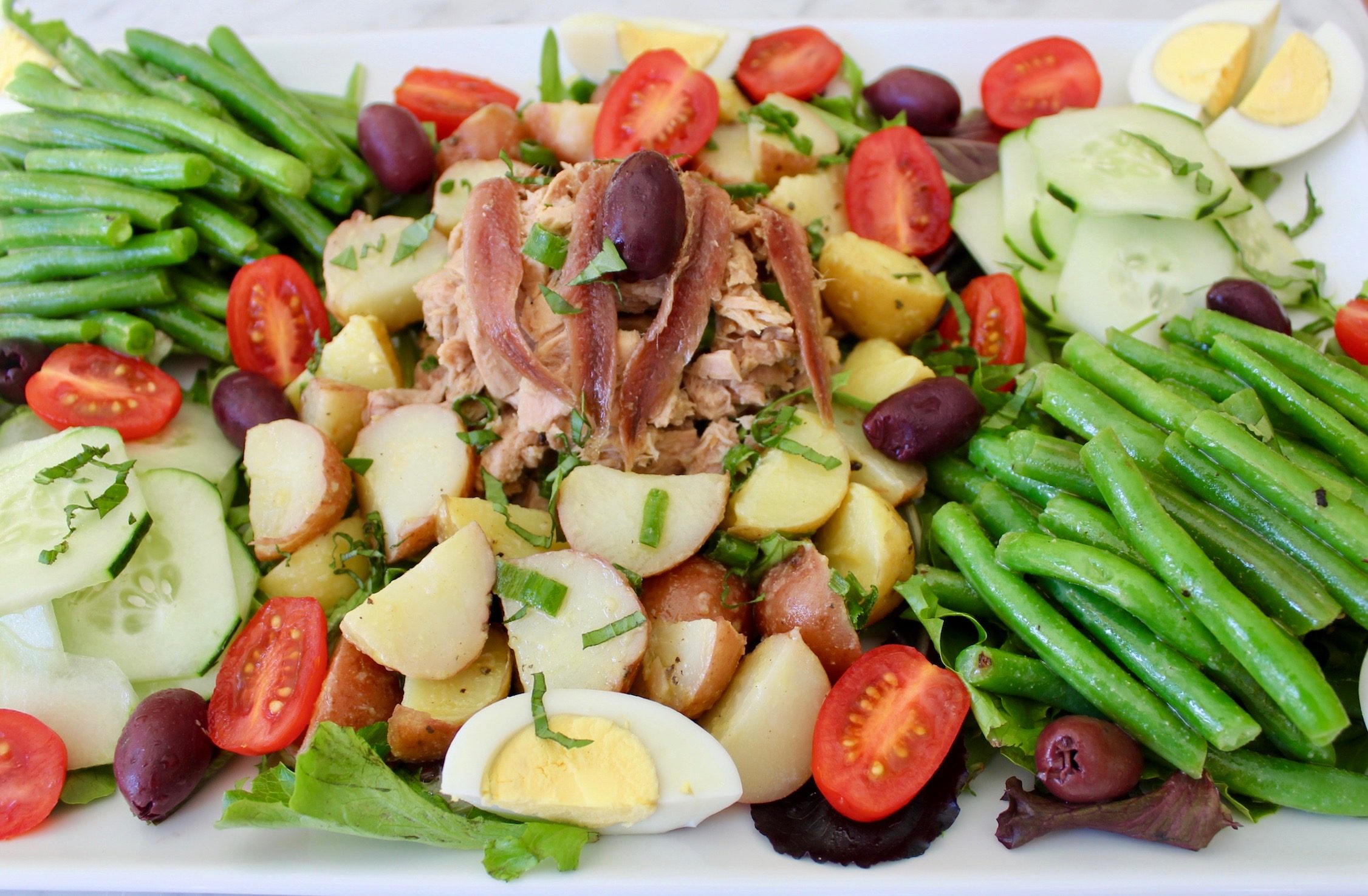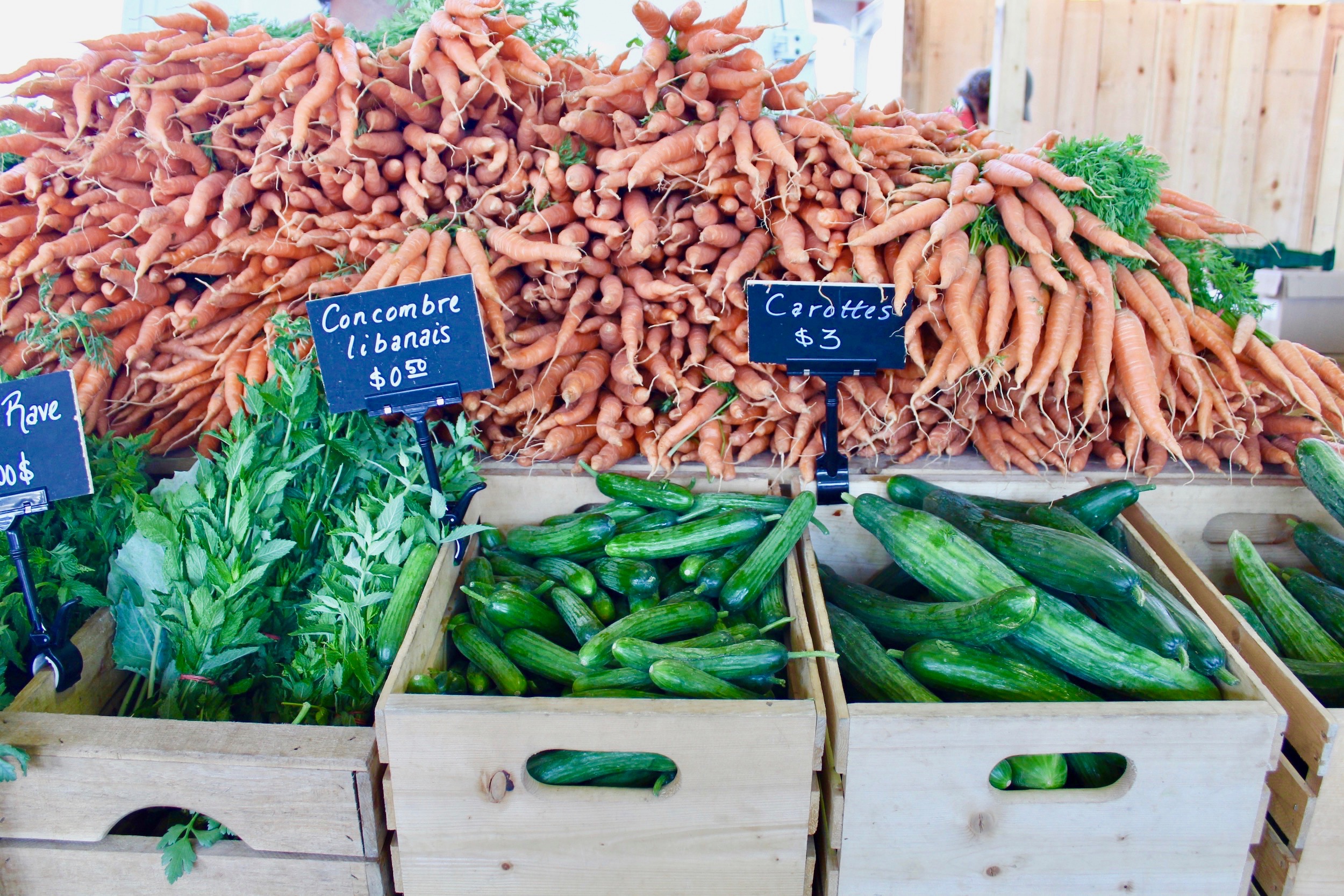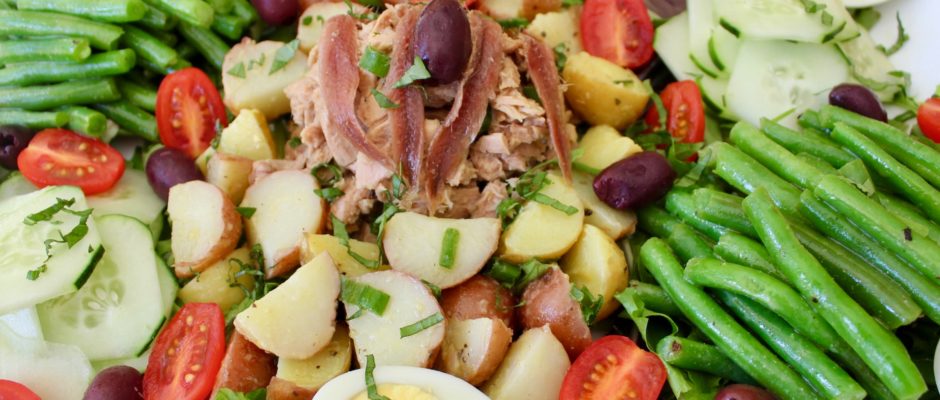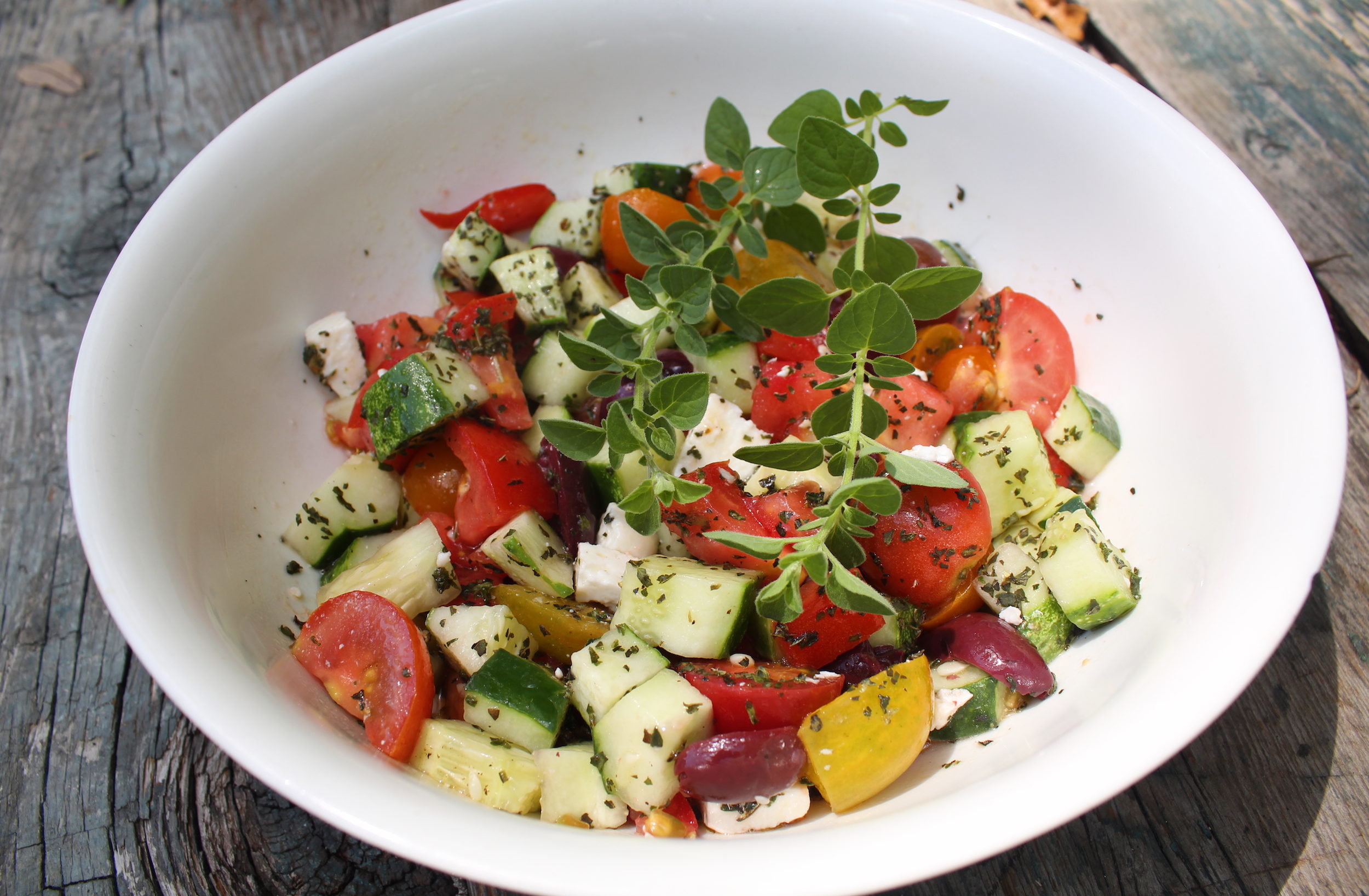A composed salad. That is the literal interpretation of salade composée.
Each food is placed with care and with thought on the plate. A salade composée gives you artistic license to assemble beautiful little tastes and samplings of complimentary foods on one plate, or individual plates, with attention to their taste, texture, and color.

In France, there are many combinations and examples of salade composée. Many of the composed, arranged salads choose ingredients and subsequently their names based on the region that the food is from. Some salads may have nuggets of foie gras, regional cheeses, or vegetables and meats indigenous to an area with names that reflect their geographic location, such as salade Lyonnnais, and salade Perigourdine.
I first realized this great attention to detail of presentation and plating and making food not only tasty but beautiful to look at, when I studied for a year at the university in Angers, France. Everything in the school dining room was served family style. We did not stand in long cafeteria style lines to have nondescript overcooked and processed food served from a huge stainless steel warming tray and slapped onto our plates with an ice cream scoop. Rather we sat with friends and faculty, while large platters of beautifully presented and inviting fresh food were brought to our tables to share. Sometimes the composition was as simple as a platter of home grown sweet and juicy red tomatoes, with sliced hard boiled eggs, a drizzle of olive oil and salt and pepper. Salade composée. Simple, yet orderly, with an air of elegance.
Rather than a mixed green salad that has been tossed, and can sometimes get a little boring and ubiquitous, think of the plate as an artists palate with which to experiment and introduce foods, geography and cultures from around the world. It’s almost like tapas, small plates, but with many small plates arranged in an orderly fashion on one plate.
You can make a successful salade composée with leftovers from your fridge. Just imagine, you can create a meal without a recipe!
Make sure to include variety such as something green and leafy, proteins that could include cooked or cured meats and fish or cheese and eggs, vegetables which can be raw or cooked by blanching or grilling, something sweet, and a dressing that binds and ties everything together.
Travel to another country or region. A Mediterranean plate may have a dab of hummus, a little tzatiki, some black olives, a few falafel, and maybe some tabbouleh or labneh. You can make a dressing or just drizzle everything with a good olive oil, a squeeze of lemon, and a dash of sea salt and fresh ground pepper. Simple and orderly with bright colors and a variety of textures.

Salad Caprese is another popular composition which is simple and made with tomatoes and fresh mozzarella usually arranged artfully on a plate and garnished with black olives.The popular American Cobb Salad is typically served as a composed rather than tossed salad. See the salad section on the blog for the ingredients and steps to compose a traditional Provencal Salade Nicoise which is a classic and one of my favorite salades composée among many others.
Cooking without a recipe and creating beautiful, savory food palates? Oui, c’est possible! Open the fridge and your pantry, your palate and your mind, and create something beautiful to eat, sur le plat.





Comments are closed.